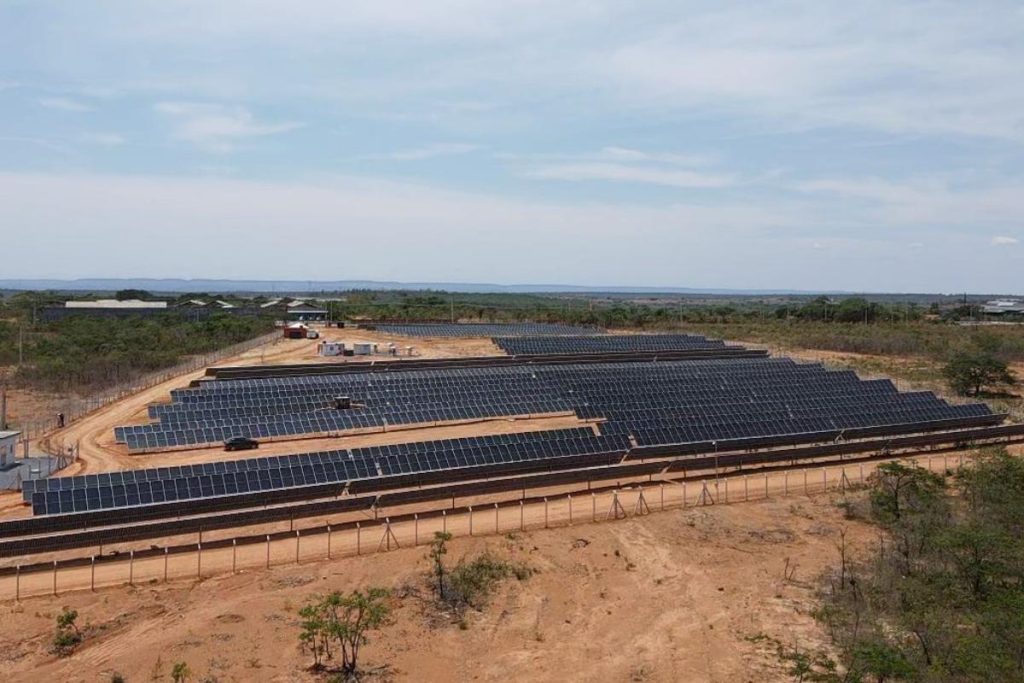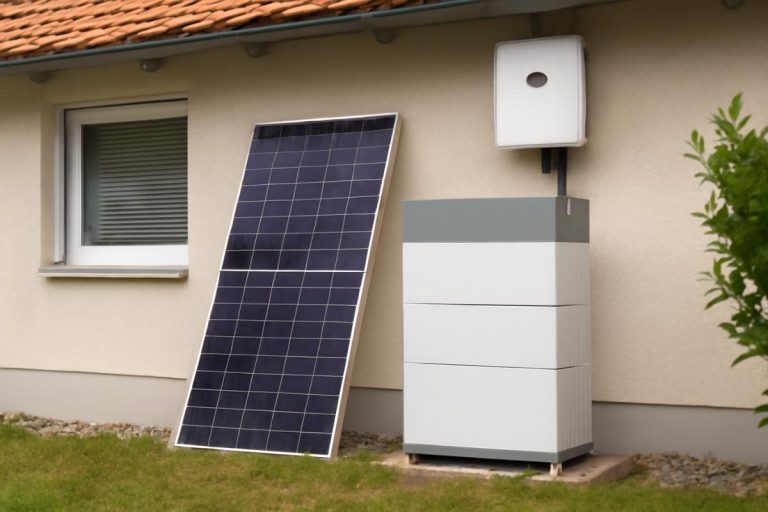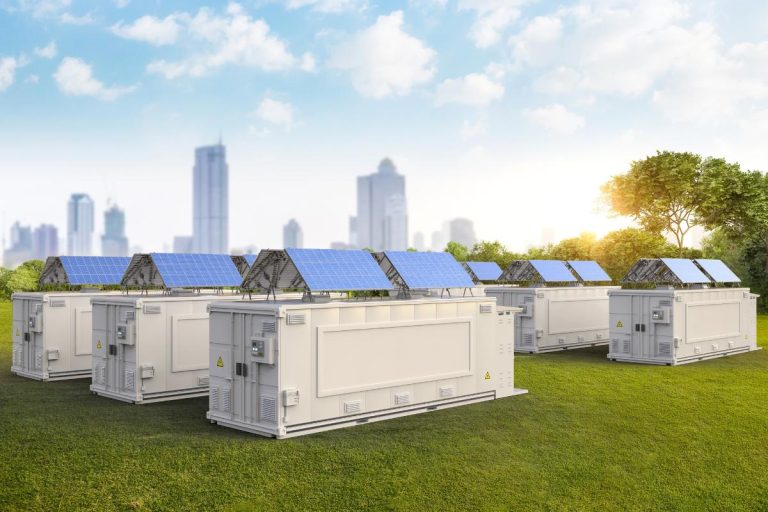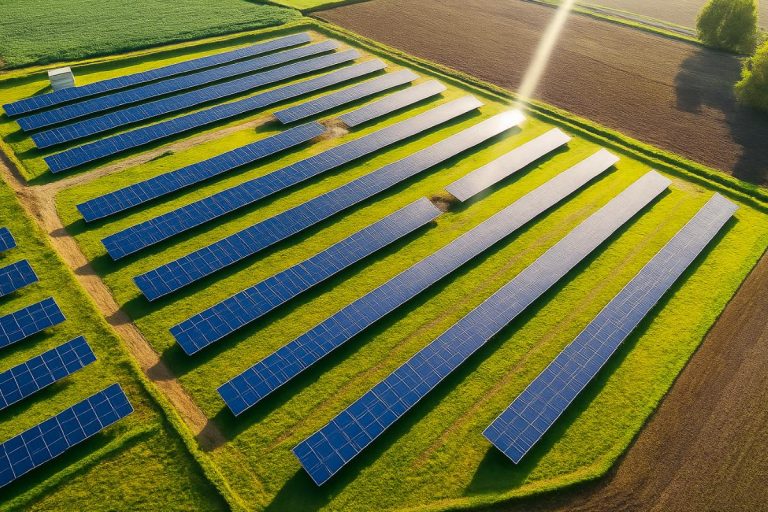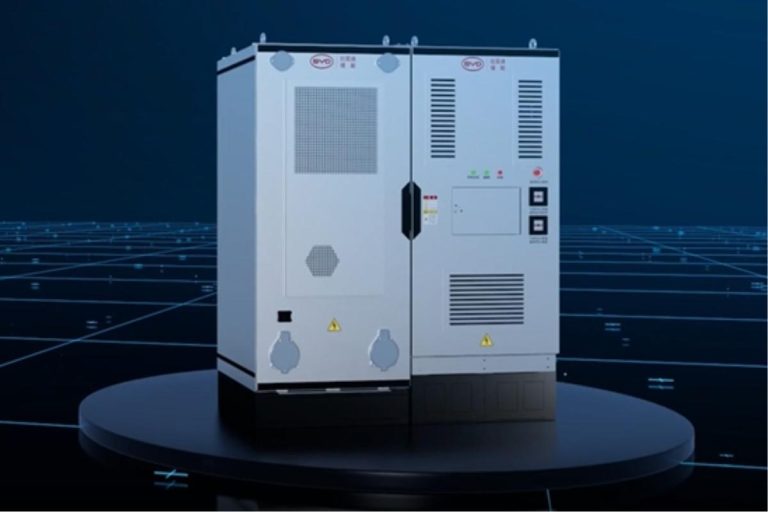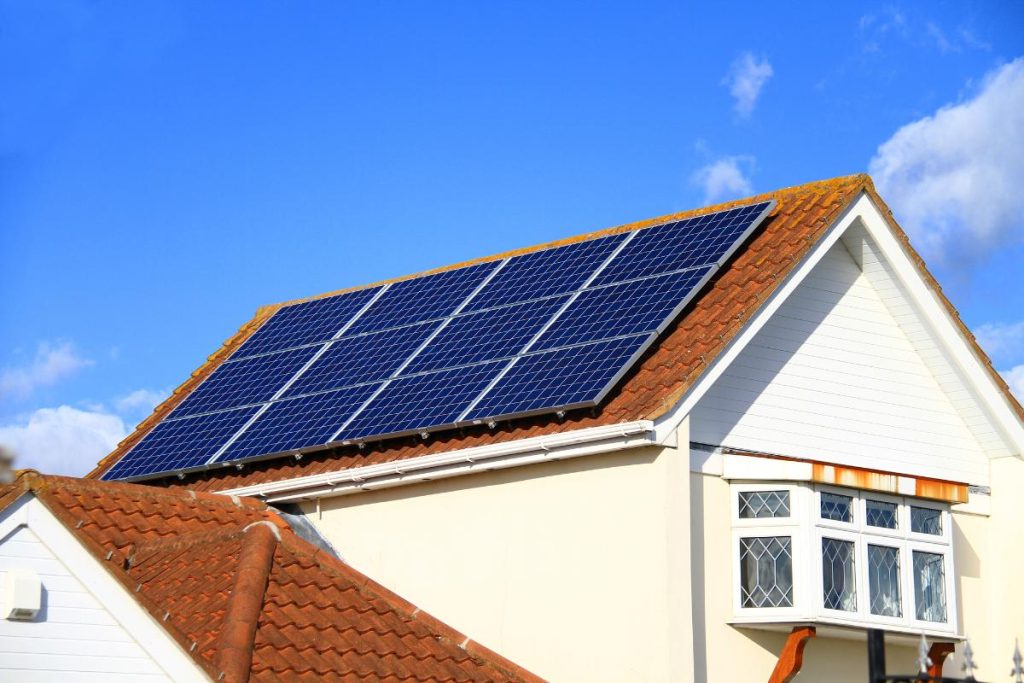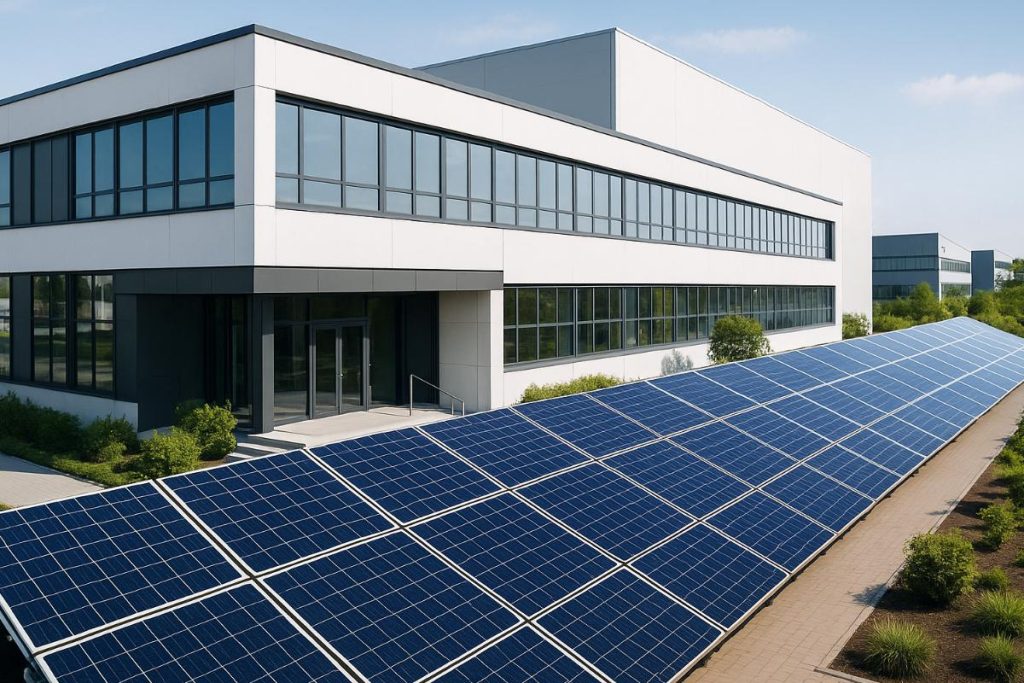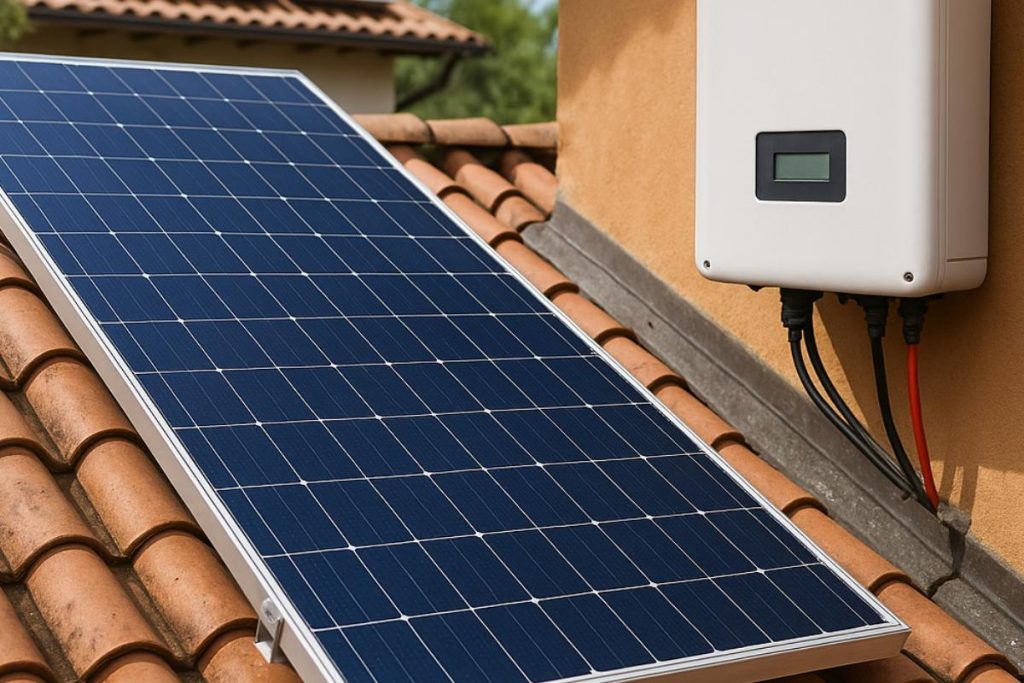Solar energy is a sustainable and economical alternative that is gaining popularity, but many still believe that installing solar systems is a complex task. In reality, the process is simpler than you might think and can bring great benefits to your home or business.
In this article, we will demystify the installation of solar energy, guiding you through the necessary steps and showing you how this technology can be implemented efficiently and affordably.
Solar energy and how it works
Before starting to install a solar energy system, it is essential to understand how it works and the types of technology available. Solar energy comes from the sun and can be converted into electricity or heat, depending on the system used.
Basic principles of solar energy
Photovoltaic solar energy is the most efficient and versatile solution, using solar panels to directly convert sunlight into electricity. These panels, made up of solar cells, capture solar radiation and transform it into an electric current, which can power everything from small homes to large industries. This system offers a wide range of applications, providing excellent long-term cost-benefit.
Main components of a solar system
A solar energy system is made up of several components that work together to capture, convert and distribute energy from the sun. Each element has a specific function. The main ones and their functions are listed below:
- Solar panels (photovoltaic modules): are responsible for capturing sunlight and converting it into electrical energy through the photovoltaic effect. Made up of silicon cells, they generate direct current (DC) when exposed to solar radiation.
- Inverter: the inverter converts the direct current (DC) produced by the solar panels into alternating current (AC), which is the type of energy used by most electronic devices and the electricity grid.
- Batteries: in off-grid or hybrid systems, batteries store the energy generated during the day for use at night or during periods without sunlight. They guarantee a continuous supply of energy.
- Mounting structures: these are supports that fix the solar panels to the roof, ground or other surfaces. They must be sturdy and positioned in such a way as to maximize the capture of sunlight.
- Cables and connectors: responsible for interconnecting all the system's components, cables and connectors must be of high quality to guarantee efficient and safe power transmission.
- Bidirectional meter: in on-grid systems, the bidirectional meter measures the energy consumed from the grid and the energy injected by the solar system, allowing energy credits to be offset.
Each component of a solar system plays an essential role in ensuring the efficiency and functionality of the system as a whole. From capturing sunlight to distributing energy, all elements must be chosen and installed with care to maximize the use of renewable and sustainable energy.
Evaluation and planning
The first step in installing a solar energy system is assessment and planning. This process is fundamental to ensuring that the system meets your needs and is installed efficiently. Let's take a closer look at each of the evaluation stages below:
Site assessment
To assess your site's potential for capturing sunlight, it's important to consider some factors that impact the efficiency of the panels:
- Location: the amount of sunlight a site receives varies according to the region and climate. Areas with more hours of sunshine throughout the year will have greater potential for generating solar energy.
- Orientation of the panels: the position of the solar panels in relation to the sun is fundamental. They should be oriented to the north (in the southern hemisphere) or to the south (in the northern hemisphere) to capture the greatest amount of sunlight during the day.
- Shading: check for objects that could cast a shadow on the solar panels. Trees and buildings can be a bad place to install them.
- Inclination: the inclination of the panels also influences the amount of energy generated. The ideal angle will vary according to the latitude of the location and should be adjusted to optimize the capture of sunlight.
Considering these factors will help ensure that your solar energy system is effective and will maximize your return on investment.
Climatic and geographical considerations
To ensure that a solar energy system works well, it is essential to look beyond the installation itself and consider the climate and geography of the location. The climate, for example, directly influences the efficiency of the panels.
In very hot regions, excess heat can reduce energy production, while in humid or rainy areas, care must be taken with humidity and corrosion. In places with harsh winters or well-marked seasons, the system should be designed to compensate for shorter or cloudier days by adjusting the tilt of the panels or including batteries to store energy.
Geography also plays an important role. Latitude defines the sun's trajectory and the amount of light available - the closer to the equator, the more consistent the energy generation. Altitude, on the other hand, can increase solar irradiation, but it also brings challenges, such as frost or snow, which require sturdy structures and frequent maintenance.
In addition, locations near the sea need corrosion-resistant panels, while desert areas can face problems with sandstorms, which reduce efficiency if the panels are not cleaned regularly.
Extreme weather events, such as strong winds or hailstorms, must also be taken into account. In regions prone to hurricanes or cyclones, for example, it is crucial to use reinforced structures and panels certified to withstand adverse conditions.
Feasibility analysis
Before investing in a solar energy system, it is essential to carry out a feasibility analysis. This study helps to understand whether the project is economically and technically viable, taking into account current energy consumption, the site's solar generation potential and the costs involved. Without this analysis, there is a risk of oversizing or undersizing the system, which can lead to unnecessary expenses or insufficient energy production.
Analysis of current energy consumption
The first step in planning a solar energy system is to understand how much energy you currently consume. To do this, simply analyze your electricity bills for the last 12 months, looking at your average monthly consumption in kWh (kilowatt-hours). This information is crucial because it defines the size of the system you will need to install.
For example, if your home consumes 300 kWh per month, the solar system should be able to generate at least that amount to cover your needs. In addition, by knowing your consumption pattern, you can identify usage peaks and adjust habits to maximize the system's efficiency. This analysis is important because it prevents you from installing a system that is larger (and more expensive) than necessary or one that is unable to meet your demand.
Estimated solar energy production
After understanding your consumption, the next step is to estimate how much energy the solar system can generate on your site. To do this, you need to consider factors such as the region's solar irradiation (amount of sun available), the space available to install the panels and the efficiency of the equipment chosen.
Online tools and specialized software can help with this estimation, using data such as the geographical location, inclination and orientation of the panels. For example, in a region with high solar irradiation, a 5 kWp (kilowatt-peak) system can generate around 600 kWh per month, while in an area with less sun, the same installation can produce only 400 kWh.
This estimate is important because it allows you to compare the energy the system will generate with your current consumption. If production is lower than necessary, you can adjust the size of the system or consider other solutions, such as batteries or staying on the grid. On the other hand, if production is higher, you can even generate energy credits, further reducing your electricity bill.
Choosing a solar energy system
Before installing, you must decide between two main types: on-grid, hybrid or off-grid systems.
On-grid systems
They are connected to the conventional electricity grid. They allow you to use the energy generated by the solar panels and also receive electricity from the grid when needed.
Any excess energy generated can be sent back to the electricity grid, often with credits on your bill. These systems are ideal for those who want to reduce their energy bills without having to store energy.
Off-grid systems
They are not connected to the electricity grid. They use batteries to store the solar energy generated, which allows them to be used even when the sun isn't shining. They are ideal for remote areas or for those who want total independence from the electricity grid.
Hybrid systems
Hybrid systems combine the best of both worlds: they are connected to the electricity grid, like on-grid systems, but also include batteries for energy storage, like off-grid systems.
This means that you can use the solar energy generated during the day, store the surplus in batteries for use at night or during power outages, and still rely on the electricity grid as a backup when necessary.
This flexibility makes hybrid systems an excellent option for those who want greater independence from the grid, but without giving up the security it offers. In addition, they are ideal for regions with higher energy tariffs or frequent supply interruptions.
Cost calculation and return on investment
Investing in solar energy brings financial and environmental benefits, but it is essential to understand the costs involved and the time needed to recoup the investment. In addition to the initial outlay, such as equipment and installation, it's important to consider maintenance and the incentives available, which can significantly reduce costs and speed up payback.
Initial costs and maintenance
The initial costs of a solar energy system include the purchase of the panels, inverters, fixing structure, installation and design. The cost varies according to the size of the system and the complexity of the installation. Maintenance is simple and low-cost, mainly involving periodic cleaning of the panels and annual technical checks to ensure proper functioning.
Tax incentives and subsidies
Many governments offer tax incentives and subsidies to stimulate solar energy installationThese include tax exemptions on the purchase of equipment or discounts on electricity bills. In Brazil, for example, there is an ICMS exemption for on-grid systems and financing programs with reduced rates. These benefits help to reduce the initial cost and speed up the return on investment.
Step by step to install solar energy
Installing a solar energy system involves stages ranging from planning to final connection. Following a well-structured step-by-step process ensures that the project is efficient, safe and on time, maximizing the benefits of solar energy.
Choosing suppliers and installers
Choosing qualified suppliers and installers is crucial to the success of the project. Companies with experience and certifications guarantee quality equipment and a professional installation, avoiding future problems. BYD, for example, is recognized in the market for offering reliable and innovative solar energy solutions, from panels to inverters, contributing to efficient and durable systems.
Installation schedule
A well-planned schedule helps organize the stages of the installation, such as delivery of the equipment, assembly of the panels and connection to the electrical system. On average, installation takes between 1 and 3 days, depending on the size of the system. Having a clear schedule avoids delays and ensures that the project is completed on time.
Preparation and permissions
Before starting the installation of a solar energy system, it is necessary to complete some bureaucratic steps and ensure that the project complies with technical and legal standards. This process, although it may seem complex, is greatly simplified in Brazil, thanks to clear regulations and well-established procedures.
Local rules and regulations
In Brazil, the installation of solar energy systems is regulated by technical standards, such as ANEEL's Normative Resolution 482, which establishes the rules for connection to the electricity grid.
These standards guarantee safety and efficiency, but also bring facilities, such as the possibility of generating energy credits and tax exemption in some states. In addition, the approval of the system with the energy concessionaire is a well-structured process, with defined deadlines and clear stages, which makes the legalization of the system agile and accessible.
Installation of solar panels
First steps completed, it's time to install the modules! Pay attention to the following topics:
Positioning and orientation of panels
The solar panel installation process begins with the assembly of the support structures. These structures must be firmly fixed in the chosen location, ensuring that they are level and correctly aligned to maximize the efficiency of the panels.
Fixing and securing panels
Once these structures are in place, the solar panels are attached to them. Once the panels are attached, the electrical connection must be made. Each solar panel has wires that must be connected to the wires of adjacent panels, forming a series or parallel combination, depending on the design of the system.
Installation of the inverter and storage system
Installing the inverter requires the device to be mounted in a dry, ventilated place, usually close to the electrical panel in the house or business. It must be installed in accordance with the manufacturer's specifications and connected to the wires coming from the solar panels.
Types of inverters
Inverters convert solar energy (direct current) into usable energy (alternating current). There are several types:
- String inverters: connect several panels in series. They are economical and ideal for simple installations without shading.
- Microinverters: installed on each panel, they maximize production in cases of shading or different orientations.
- Power optimizers: work with string inverters, adjusting the output of each panel to avoid losses.
- Hybrid inverters: manage panels and batteries, allowing energy to be stored and used even without a power grid.
- Off-Grid Inverters: designed for isolated systems, without connection to the grid, guaranteeing continuous power with batteries.
The choice depends on the system: microinverters for complex roofs, string for simple installations, and hybrid or off-grid for those looking for storage and independence.
Energy storage options
If the system includes a storage system, such as batteries, the integration must be done in accordance with the guidelines of the battery and inverter manufacturer. The batteries are connected to the inverter and store the surplus energy generated by the solar panels.
Testing and inspection
Once the solar panels and electrical components have been installed, initial tests need to be carried out to ensure that the system is working properly. These tests include checking that all the panels are generating energy and that the inverter is converting direct current into alternating current efficiently.
System efficiency check
A final inspection must be carried out to verify the integrity of the installation. Checking all electrical connections to ensure that they are safe and free from hazards, confirming that the panels are well fixed and aligned, and ensuring that all components are working as expected.
The final check should always be carried out by a qualified professional to ensure that the system complies with safety and efficiency standards.
Preventive and corrective maintenance
Keeping your solar energy system up to date is essential for it to work well and last a long time. Preventive maintenance includes simple things like cleaning the panels from time to time to remove dust, leaves or anything else that might hinder the capture of sunlight.
It also involves checking the equipment to make sure everything is okay before a problem arises. Corrective maintenance comes into play when something goes wrong, such as an inverter malfunction or storm damage, for example.
This care is important because it keeps the system producing energy at maximum capacity, avoids waste and helps extend the life of the equipment. In addition, regular preventive maintenance reduces the chance of needing emergency repairs, which are often more expensive and labor-intensive. Taking care of the system is a way of protecting your investment and ensuring that it continues to save you money for many years to come.
The importance of having the right partners
Choosing the right partners to install and maintain your solar energy system is a crucial step in ensuring that everything works as expected. From the quality of the equipment to the technical support after installation, having reliable companies makes all the difference to the system's performance and durability.
Criteria for choosing suppliers
When choosing a supplier, it's important to evaluate a few key points: the company's reputation, the quality of the equipment offered and its experience in the market. BYD, for example, is recognized globally for its advanced technology and durable products, such as high-efficiency panels and inverters.
Also, check that the company has certifications and offers specialized technical support. Choosing a credible supplier guarantees that you will have quality equipment and a professional service from the outset.
Warranties and technical support
Having guarantees and technical support is essential to protecting your investment. Warranties cover defects in equipment such as panels and inverters, while technical support helps solve problems that may arise over time.
This is especially important for system maintenance, as fast and efficient assistance avoids long periods of downtime and loss of production. Companies like BYD offer extended warranties and specialized support, which gives users more security and peace of mind. Having this backing ensures that your system always works at its best.
Benefits of solar energy
Solar energy is one of the cleanest and most accessible energy sources available today, with advantages ranging from cost savings to contributing to a more sustainable planet. In addition, governments and institutions offer incentives that make this technology even more attractive.
Environmental sustainability
Solar energy is renewable and does not emit polluting gases when generating electricity, which helps to reduce the carbon footprint and combat climate change. By opting for a solar system, you contribute to preserving the environment by reducing dependence on non-renewable energy sources such as coal and oil. It's a choice that benefits not only your pocket, but also the planet.
Government incentives
Many governments offer incentives to encourage the adoption of solar energy, such as tax exemptions, subsidies and financing programs with reduced rates. In Brazil, for example, there is an ICMS exemption for on-grid systems and special credit lines. These benefits reduce the initial cost of installation and speed up the return on investment, making solar energy an even more viable and attractive option.
Reduced energy costs
With solar panels, you start producing your own electricity, which reduces or even eliminates the need to buy energy from the public grid.
Comparison of accounts before and after
In an average home, for example, where the electricity bill is around R$500 per month, installing a solar system can reduce this amount to around R$25, depending on consumption, the capacity of the system installed and the local utility rates. This type of saving is even more impactful in companies or industries, where energy consumption is higher.
Long-term impact
In terms of return on investment (payback), the initial amount spent on installing solar panels usually pays for itself in around 4 to 7 years. After that, the energy generated is practically free, and the system can last more than 25 years.
In other words, over time, the accumulated savings can be very significant, making solar energy an investment that not only pays for itself, but also brings financial returns in the long term.
Energy independence
By generating your own electricity, you significantly reduce your dependence on the utility companies and this has many benefits. Imagine no longer worrying about sudden tariff increases or power outages.
Self-sufficiency and energy security
With a solar panel system, you have greater control over your energy consumption and can better adapt to your specific needs. What's more, in places where the electricity grid is unstable or non-existent, solar energy is a viable option for ensuring a continuous supply.
Impact on remote areas
This not only increases the autonomy of your system, but also brings additional security in cases of emergencies, remote areas or natural disasters, where the power grid could be compromised.
Property valuation
Investing in solar energy also has the benefit of increasing the value of your property. Properties with solar energy systems installed are seen as more modern and sustainable, which can attract buyers and tenants.
Increase in market value
Studies indicate that houses with solar systems can be sold up to 20% faster and for up to 10% more than properties without this technology.
Attracting conscious buyers
What's more, in a market that is increasingly aware of the benefits of sustainability, having a solar system can be an important differentiator. In some cases, the increase in property value can even outweigh the cost of installing the panels, making solar energy a worthwhile investment in both the short and long term.
Calculating savings from solar energy
Understanding the savings provided by solar energy involves considering some crucial factors, such as geographical location, the size of the system and the orientation of the panels. Regions with higher solar incidence, larger systems and a good orientation of the panels generate more energy and, obviously, greater savings.
Calculation tools and methods
Let's take a practical example: a household with an electricity bill of R$600 installs a solar system that covers 90% of consumption. As a result, the bill drops to R$60, generating monthly savings of R$540, or R$6,480 per year.
If the installation cost was R$30,000, the return on investment is around 4.6 years. After this period, the system continues to generate savings for many years, as its useful life can exceed 25 years.
How to increase savings with solar energy
To ensure that the solar energy system continues to generate maximum savings, it is essential to carry out regular maintenance and monitoring. A well-maintained system not only operates more efficiently, but also has a longer lifespan, which increases the financial benefits over time.
Optimizing energy consumption
Keeping panels clean is one of the simplest and most effective actions. Dust, leaves and other dirt can reduce the efficiency of the panels, reducing the amount of energy generated. Cleaning should be done periodically, with greater attention paid to areas with a lot of pollution or dust.
Another important tip is to monitor the system. Regularly monitor energy production using a monitoring system, which is usually offered by suppliers. This allows you to quickly detect any drop in efficiency and take action before it significantly affects savings.
In addition, ensuring that the panels are well positioned and tilted correctly is crucial. If you notice that efficiency has dropped, you may need to adjust the inclination or check that there are no new shadows interfering, such as trees that have grown since installation.
Integration with other sustainable technologies
Combining a solar energy system with other sustainable technologies can bring even greater savings and efficiency. For example, you can combine solar panels with solar water heaters, which help reduce the use of electricity or gas.
Another idea is to use batteries to store the extra energy generated during the day, which can be used at night or at higher tariff times, increasing independence and savings.
In addition, integrating solar energy with technologies such as LED light bulbs, efficient appliances and home automation systems helps to make better use of the energy generated, avoiding waste and increasing the return on investment.
You can change the world!
Finally, consider reviewing your energy consumption. Small changes in daily habits, such as using appliances at times of peak solar production (during the day), can further optimize savings.
Maintaining a conscious use of energy, combined with a well-functioning solar system, maximizes the return on investment and ensures that you make the most of the savings potential offered by solar energy.
At BYD, our mission is to transform the world by changing our dependence on non-renewable energy to clean and sustainable sources. Our photovoltaic energy solutions serve a variety of segments: residential, commercial, industrial and much more.
Get to know BYD!

